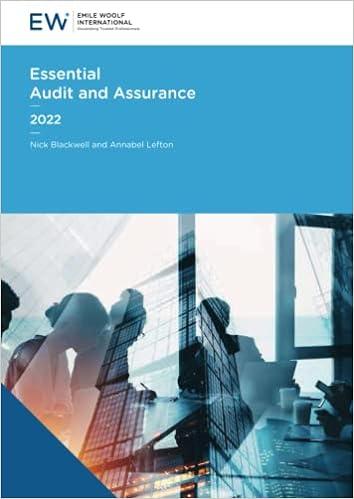Stuppose that the Phillips curve is given by t=te(t5%); and expected inflation is given by ie=t1 a. What is the sacrifice ratio in this economy? Suppose that unemployment is initially equal to the natural rate and n=12%. The central bank decides that 12% inflation is too high and that, starting in year t, it will maintain the unemployment rate 1 percentage point above the natural rate of unemployment until the inflation rate has decreased to 2%. b. Compute the rate of inflation for years t,t+1,t+2 and so on. c. For how many years must the central bank keep the unemployment rate above the natural rate of unemployment? Is the implied sacrifice ratio consistent with your answer to (a)? Now suppose that people know that the central bank wants to lower inflation to 2%, but they are not sure about the central bank's willingness to accept an unemployment rate above the natural rate of unemployment. As a result, their expectation of inflation is a weighted average of the target of 2% and last year's inflation - i.e. te=2%+(1)t1 where is the weight they put on the central bank's target of 2%. d. Let =0.25. How long will it take before the inflation rate is equal to 2% ? What is the sacrifice ratio? Why is it different from the answer in (c)? Suppose that after the policy has been in effect for one year, people believe that the central bank is indeed committed to reducing inflation to 2%. As a result, they now set their expectations according to Te=2% e. From what year onward can the central bank let the unemployment rate return to the natural rate? What is the sacrifice ratio now? f. What advice would you give to a central bank that wants to lower the rate of inflation by increasing the rate of unemployment as little and for as short a time period as possible? Stuppose that the Phillips curve is given by t=te(t5%); and expected inflation is given by ie=t1 a. What is the sacrifice ratio in this economy? Suppose that unemployment is initially equal to the natural rate and n=12%. The central bank decides that 12% inflation is too high and that, starting in year t, it will maintain the unemployment rate 1 percentage point above the natural rate of unemployment until the inflation rate has decreased to 2%. b. Compute the rate of inflation for years t,t+1,t+2 and so on. c. For how many years must the central bank keep the unemployment rate above the natural rate of unemployment? Is the implied sacrifice ratio consistent with your answer to (a)? Now suppose that people know that the central bank wants to lower inflation to 2%, but they are not sure about the central bank's willingness to accept an unemployment rate above the natural rate of unemployment. As a result, their expectation of inflation is a weighted average of the target of 2% and last year's inflation - i.e. te=2%+(1)t1 where is the weight they put on the central bank's target of 2%. d. Let =0.25. How long will it take before the inflation rate is equal to 2% ? What is the sacrifice ratio? Why is it different from the answer in (c)? Suppose that after the policy has been in effect for one year, people believe that the central bank is indeed committed to reducing inflation to 2%. As a result, they now set their expectations according to Te=2% e. From what year onward can the central bank let the unemployment rate return to the natural rate? What is the sacrifice ratio now? f. What advice would you give to a central bank that wants to lower the rate of inflation by increasing the rate of unemployment as little and for as short a time period as possible







